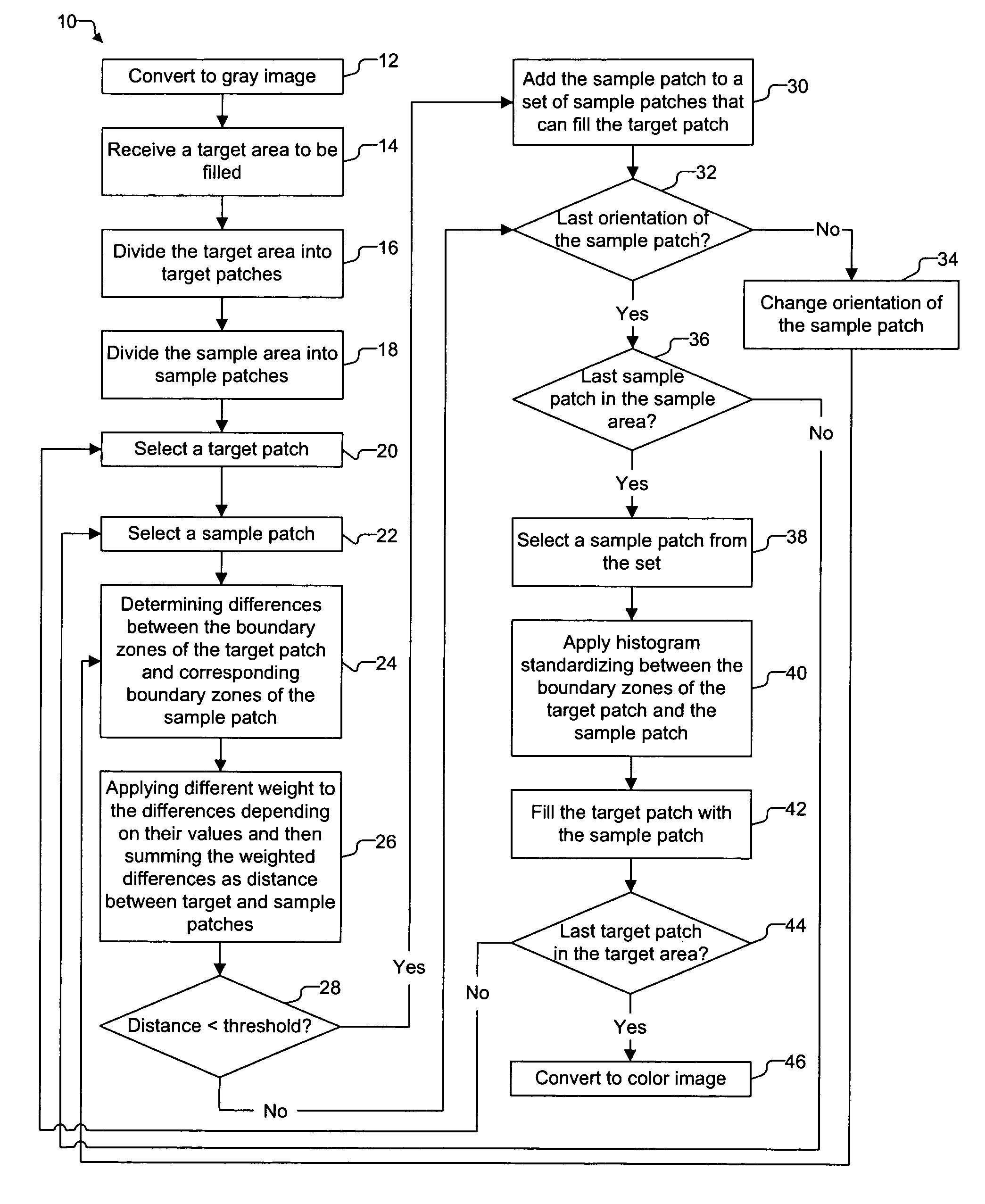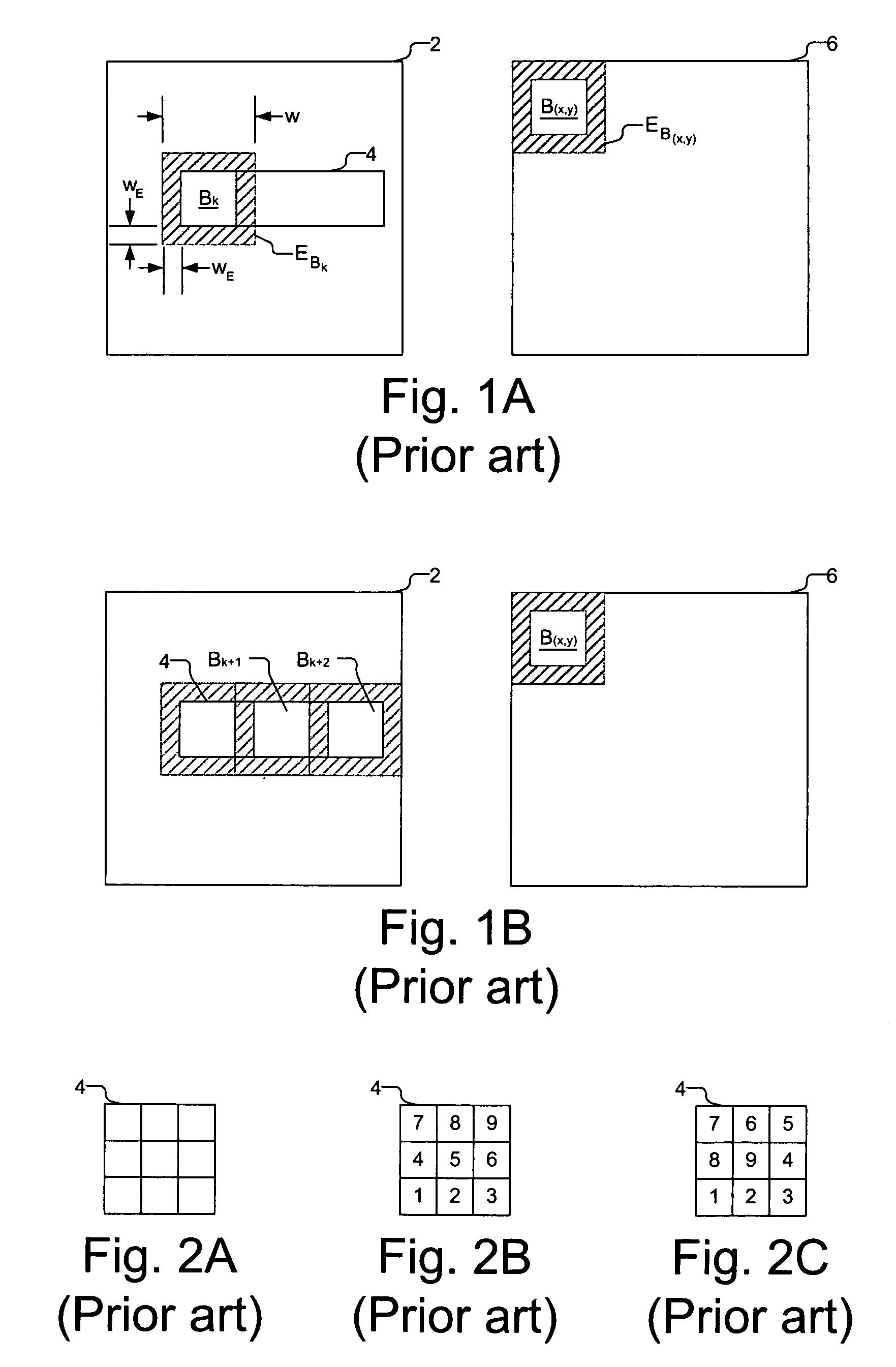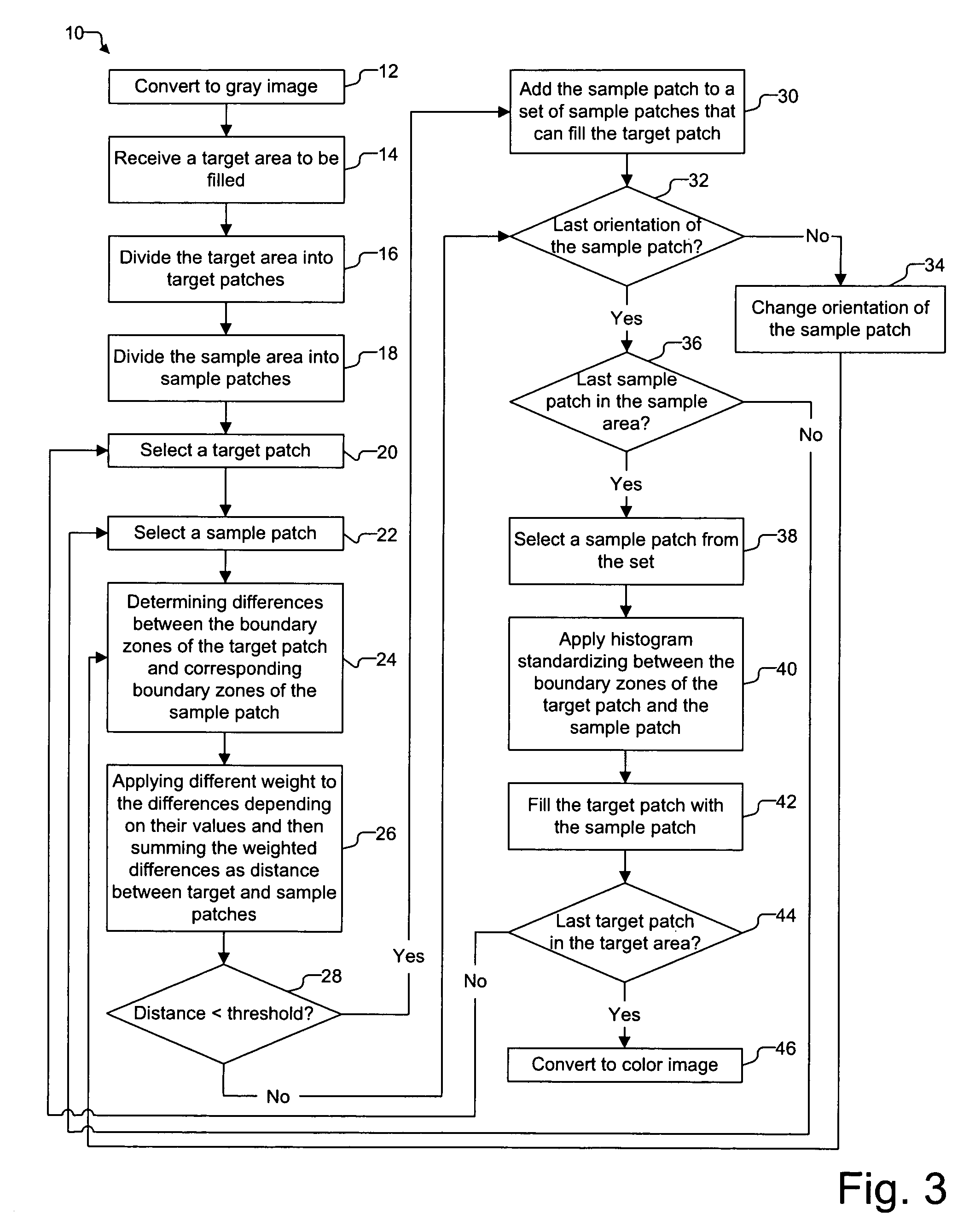Texture synthesis for repairing damaged images
a technology of texture synthesis and image, applied in the field of image inpainting and texture synthesis software, can solve the problems of image texture information not being retrieved, blurry without texture information, and complicated texture features of images
- Summary
- Abstract
- Description
- Claims
- Application Information
AI Technical Summary
Problems solved by technology
Method used
Image
Examples
Embodiment Construction
Problems of a Conventional Patched-based Sampling Algorithm
[0014]Liang et al. discloses a patch-based sampling algorithm for synthesizing textures from a sample. This sampling algorithm is hereafter explained in reference to FIG. 1A where an image 2 has a target area 4 to be filled with textures from a sample texture 6. Target area 4 is divided into target patches Bk having a patch size of w by w (only one is labeled for clarity), where k is a variable. If the width or the height of target area 4 is not a multiple of w, the size of the last row and the last column of target patches is defined as:
w*w1, w2*w, (1)
w1=W mod w, w2=H mod w, (2)
where W and H express the width and height of the target area, respectively, and mod is the function that calculates the residual of W or H divided by w.
[0015]Each target patch Bk includes a boundary zone EBk having a width wE surrounding the target patch. Boundary zone EBk includes known texture from image 2 and derived texture from filling in oth...
PUM
 Login to View More
Login to View More Abstract
Description
Claims
Application Information
 Login to View More
Login to View More - R&D
- Intellectual Property
- Life Sciences
- Materials
- Tech Scout
- Unparalleled Data Quality
- Higher Quality Content
- 60% Fewer Hallucinations
Browse by: Latest US Patents, China's latest patents, Technical Efficacy Thesaurus, Application Domain, Technology Topic, Popular Technical Reports.
© 2025 PatSnap. All rights reserved.Legal|Privacy policy|Modern Slavery Act Transparency Statement|Sitemap|About US| Contact US: help@patsnap.com



